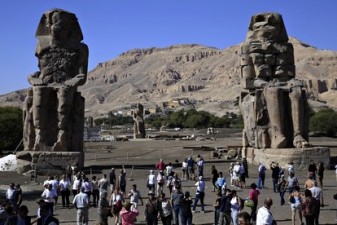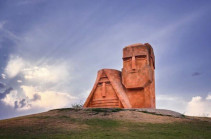
15/12/2014 14:59
Pharaoh’s statue restored 3,200 years after collapse in earthquake
Archaeologists have unveiled a restored statue of Amenhotep III that was toppled in an earthquake more than 3,000 years ago at Egypt’s temple city of Luxor.
The statue was re-erected at the northern gate of the king’s funerary temple on the west bank of the Nile. The temple is already famous for its 3,400-year-old Memnon colossi – twin statues of Amenhotep III, whose reign archaeologists say marked the political and cultural zenith of ancient Egyptian civilisation.
The 12.9-metre (43ft) statue unveiled on Sunday stands west of another effigy of the king, also depicting him walking, which was unveiled in March. “These are up to now the highest standing effigies of an Egyptian king in striding attitude,” said German-Armenian archaeologist Hourig Sourouzian, who heads the project to conserve the temple. The twin Memnon colossi are 21 metres tall but show the pharaoh seated.
The restored statue now stands again for the first time since its collapse 3,200 years ago, Sourouzian said. Consisting of 89 large pieces and numerous small fragments and reassembled since November, the monolith weighs 110 tonnes. It had lain broken in pieces after an earthquake in 1200BC, Sourouzian said.
The statue shows the king wearing the white crown of Upper Egypt, and each hand holding a papyrus roll inscribed with his name. His belt, holding a dagger with a falcon-head handle, is fastened with a rectangular clasp bearing the names of the king.
Pharaoh Amenhotep III inherited an empire that stretched from the Euphrates to Sudan, archaeologists say. The 18th dynasty ruler became king aged around 12, with his mother as regent. Amenhotep III died in around 1354BC and was succeeded by his son Amenhotep IV, widely known as Akhenaten.








